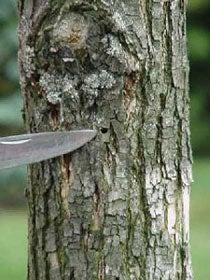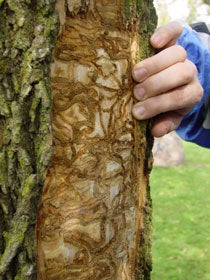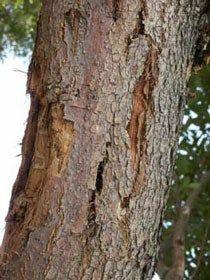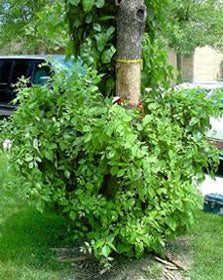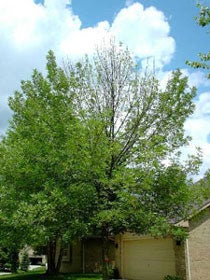Ash trees, in the genus Fraxinus, are the only known hosts of EAB in North America. Trees such as Mountain ash (Sorbus sps) and wafer-ash (Ptelea trifoliata) are not in this same family and are not hosts of EAB. The EAB is different from most borers, in that it will attack both stressed and healthy trees. Most other borers are attracted to and prefer to infest stressed trees. Ash trees of all sizes have been found to be infested, from approximately one-inch caliper nursery stock, to very large landscape trees. Generally, ash trees will only live two-four years after becoming infested by EAB. Infestations of EAB, generally, start in the upper crown of the tree and move downward into the lower branches and trunk. Symptoms of EAB infestation may include canopy dieback, bark splitting, and the growth of water sprouts. Signs of EAB include the presence of D-shaped exit holes and the distinctive S-shaped serpentine galleries under the bark.
Ash trees are susceptible to various other borers, most commonly Ash-Lilac Borer (Podosesia syringae) and Banded Ash Clearwing Borer (Podosesia aureocinta). Symptoms of infestation by these clearwing borers may appear similar to EAB infestation, including crown dieback and bark splitting. However, these borers emerge from the tree through round exit holes, and frequently leave behind a pupal case in the exit hole. Unlike EAB larvae, the clearwing borer larvae is round and has a distinctive reddish-brown head.
For more information on EAB, including biology, identification and symptoms, and quarantine areas, visit www.emeraldashborer.info.
